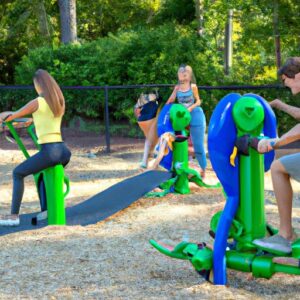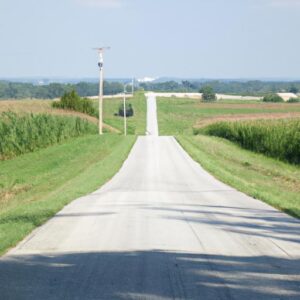National recreation areas serve as sanctuaries of nature, providing an escape from the hustle and bustle of city life. These pristine lands offer a wide array of recreational activities, from hiking and camping to fishing and wildlife observation. However, amid the tranquility and beauty, a question arises: is logging permitted in national recreation areas? In this article, let’s delve into this intriguing topic and explore the significance of logging within these protected spaces.
1. Introduction
A. Overview of National Recreation Areas
National recreation areas are designated by the government to preserve and showcase the natural wonders of a region. These areas are managed by federal agencies, such as the National Park Service or the United States Forest Service, and are specifically intended to provide recreational opportunities while conserving the environment. They encompass vast expanses of land, encompassing diverse ecosystems and rare species, attracting millions of visitors each year.
B. Importance of Logging in National Recreation Areas
When discussing logging in national recreation areas, it is crucial to understand the role it plays in the larger context. Logging, the practice of harvesting trees for commercial purposes, has both economic and ecological implications. On one hand, it supports local economies, providing jobs and contributing to the production of wood products. On the other hand, it can have significant environmental consequences, impacting wildlife habitats, water quality, and overall ecosystem health.
As we embark on this exploration, we will unravel the complexities and implications of logging in national recreation areas. Let us evaluate the activities permitted within these protected lands, the regulations governing logging practices, and the potential consequences that arise from such activities. By the end of this article, we aim to shed light on the permissibility of logging in national recreation areas, considering the delicate balance between conservation and economic considerations.
Stay tuned as we continue to unravel this captivating topic and dive deeper into the world of national recreation areas and logging practices.
2. Understanding National Recreation Areas
National recreation areas are more than just picturesque landscapes; they serve a vital purpose in preserving our natural heritage. In this section, we will delve into the definition and purpose of national recreation areas, explore the range of activities permitted within these protected spaces, and shed light on the restrictions and regulations that ensure their conservation.
A. Definition and Purpose of National Recreation Areas
National recreation areas are designated areas of land managed by federal agencies with the primary objective of protecting and providing recreational opportunities for visitors while preserving the natural environment. These areas often encompass diverse ecosystems, including forests, mountains, rivers, and lakes, offering a wide range of recreational activities for people of all ages and interests.
The purpose of establishing national recreation areas is to strike a balance between conservation and recreation. These areas serve as living classrooms, where visitors can learn about the importance of environmental stewardship and experience the wonders of nature firsthand. By designating specific areas as national recreation areas, authorities aim to protect and showcase the unique landscapes and biodiversity of these regions for the enjoyment and education of present and future generations.
B. Activities Permitted in National Recreation Areas
National recreation areas provide a plethora of recreational opportunities, catering to the diverse interests of visitors. From thrilling outdoor adventures to serene nature walks, there is something for everyone. Activities commonly permitted in national recreation areas include hiking, camping, fishing, boating, wildlife observation, photography, and even educational programs and guided tours. These activities allow visitors to immerse themselves in the natural beauty and cultural history of these areas while fostering a deeper connection with the environment.
C. Restrictions and Regulations in National Recreation Areas
While national recreation areas encourage recreational activities, they are not without restrictions and regulations. These measures are in place to protect the delicate ecosystems and ensure the safety and enjoyment of all visitors. Some common regulations include restrictions on off-road vehicle use, camping permits, fishing licenses, and specific guidelines for wildlife encounters. Additionally, restrictions on commercial activities, such as logging, may be enforced to safeguard the integrity of the natural environment.
Understanding the definition, purpose, activities permitted, and the regulations governing national recreation areas is crucial when examining the permissibility of logging within these protected spaces. In the following sections, we will explore the implications of logging in national recreation areas and the policies put in place to maintain the delicate balance between conservation and utilization.
Logging and its Impact on National Recreation Areas
National recreation areas are cherished for their natural beauty and the opportunities they provide for outdoor recreation. However, logging activities within these areas can have a significant impact on the delicate ecosystems they encompass. In this section, we will explore the definition and scope of logging, examine its environmental impact in natural areas, and discuss the potential consequences it may have specifically within national recreation areas.
A. Definition and Scope of Logging
Logging, also known as timber harvesting or forestry, involves the process of cutting down trees for commercial purposes. It encompasses various activities, including tree felling, transportation, and processing of timber. Logging practices can range from selective cutting, where specific trees are harvested, to clear-cutting, which involves removing all trees in a designated area.
B. Environmental Impact of Logging in Natural Areas
Logging in natural areas can have profound environmental implications. The alteration of forest landscapes through tree removal disrupts the intricate balance of these ecosystems. It can lead to habitat loss for numerous plant and animal species, affecting biodiversity and ecological stability. Moreover, logging can result in soil erosion, water pollution, and disturbance of natural processes such as nutrient cycling.
C. Potential Consequences of Logging in National Recreation Areas
Within national recreation areas, logging can pose unique challenges. These areas are intended to provide a pristine and undisturbed environment for visitors to enjoy. However, the introduction of logging activities may compromise the recreational experience and diminish the natural beauty that draws people to these areas. Additionally, logging can disrupt sensitive wildlife habitats, degrade scenic views, and impact the overall serenity of the recreational environment.
As we delve further into this subject, we will explore the policies and regulations that govern logging practices in national recreation areas. Join me in the next section as we examine the laws in place and the efforts made to strike a balance between timber harvesting and the preservation of these cherished natural spaces.
Logging Policies and Regulations in National Recreation Areas
National recreation areas are governed by a set of policies and regulations to ensure the preservation of these natural havens while allowing for sustainable recreational activities. Let’s delve into the logging policies and regulations that exist within these protected spaces.
A. Federal Laws and Guidelines Regarding Logging
The logging practices within national recreation areas are subject to federal laws and guidelines that aim to balance conservation efforts with economic considerations. One such law is the National Environmental Policy Act (NEPA), which requires federal agencies to assess the environmental impacts of their actions, including logging activities. Additionally, the Endangered Species Act (ESA) protects threatened and endangered species, ensuring their habitats are not compromised by logging practices.
Federal guidelines, such as those provided by the U.S. Forest Service or the National Park Service, offer further direction on logging in national recreation areas. These guidelines outline best practices, sustainable harvesting methods, and restrictions to mitigate the ecological impact of logging.
B. Specific Regulations for Logging in National Recreation Areas
In addition to federal laws and guidelines, specific regulations govern logging activities within national recreation areas. These regulations vary depending on the designated area and the agency responsible for its management. They often include restrictions on the size and location of logging operations, limitations on the types of trees that can be harvested, and requirements for reforestation and habitat restoration.
It is important to note that national recreation areas may have differing regulations compared to other types of protected lands, such as national parks or wilderness areas. These regulations are tailored to strike a balance between preserving the recreational value of the area and allowing sustainable logging practices.
C. Role of Government Agencies in Monitoring Logging Activities
Government agencies, such as the U.S. Forest Service or the National Park Service, play a crucial role in monitoring logging activities within national recreation areas. These agencies are responsible for enforcing the regulations and ensuring compliance with the established guidelines. They conduct regular inspections, evaluate logging plans, and monitor the ecological impact of logging operations.
By actively monitoring logging activities, these government agencies aim to maintain the integrity of national recreation areas and safeguard the ecological health of these cherished landscapes.
As we progress through this article, we will explore the controversies surrounding logging in national recreation areas and delve deeper into the arguments for and against this practice. Stay tuned for the upcoming sections where we unpack the diverse perspectives on this compelling topic.
Controversies Surrounding Logging in National Recreation Areas
The permissibility of logging in national recreation areas has long been a subject of debate and controversy. Let’s delve into the arguments and considerations that fuel this ongoing discourse.
A. Arguments in Favor of Logging in National Recreation Areas
Proponents of logging in national recreation areas argue that it can bring economic benefits to local communities and contribute to sustainable forest management. By harvesting trees responsibly, they believe that logging can provide jobs, support the timber industry, and stimulate the economy. Furthermore, they assert that proper logging practices, such as selective cutting and reforestation, can help maintain a healthy forest ecosystem and promote biodiversity.
B. Arguments Against Logging in National Recreation Areas
Opponents of logging in national recreation areas emphasize the need to prioritize conservation and preservation of these natural spaces. They argue that logging can have detrimental effects on fragile ecosystems, disrupt wildlife habitats, and degrade the scenic beauty that attracts visitors. Additionally, they raise concerns about the potential for soil erosion, water pollution, and loss of recreational opportunities. Critics often advocate for alternative economic activities, such as ecotourism or sustainable harvesting practices, that align better with the goals of preserving natural areas.
C. Balancing Conservation and Economic Considerations
Finding a balance between conservation and economic considerations is a complex task. Many stakeholders argue that there is a middle ground where responsible logging practices can coexist with conservation efforts. This approach entails strict regulations, monitoring, and sustainable forestry practices to minimize environmental impacts. Balancing the needs of local economies and the preservation of natural resources requires thoughtful decision-making, scientific research, and open dialogue among various stakeholders.
As we explore the controversies surrounding logging in national recreation areas, it is vital to consider the diverse perspectives and weigh the potential consequences. The delicate balance between conservation, economic interests, and sustainable practices will continue to shape the future of logging within these cherished natural spaces.
Conclusion
Throughout this exploration, we have delved into the intriguing question of whether logging is permitted in national recreation areas. By examining the overview of these areas and understanding the importance of logging within them, we have gained valuable insights into the complexities surrounding this topic.
National recreation areas are vital for preserving the natural beauty and providing recreational opportunities for visitors. However, the permissibility of logging in these areas remains a contentious issue. On one hand, logging can contribute to local economies and the production of wood products. On the other hand, it can have detrimental effects on the environment, including wildlife habitats and overall ecosystem health.
The regulations and policies governing logging in national recreation areas aim to strike a balance between conservation and economic considerations. Federal laws and guidelines play a crucial role in monitoring and managing logging activities, ensuring that they are conducted in an environmentally sustainable manner.
Controversies surrounding logging in national recreation areas arise from differing perspectives. While some argue in favor of the economic benefits, others emphasize the need to prioritize conservation and the preservation of natural resources. Balancing these viewpoints is essential to maintain the integrity of national recreation areas and ensure their long-term sustainability.
In conclusion, the permissibility of logging in national recreation areas is a complex issue that requires careful consideration of environmental, economic, and social factors. As stewards of these natural treasures, it is crucial to continue exploring sustainable practices that minimize the impact while still meeting the needs of local communities. By prioritizing conservation and responsible management, we can ensure that national recreation areas continue to thrive for future generations to enjoy.
Thank you for joining me on this journey through the intricacies of logging in national recreation areas. Let us continue to cherish and protect these remarkable spaces, preserving their beauty and ecological significance for years to come.





